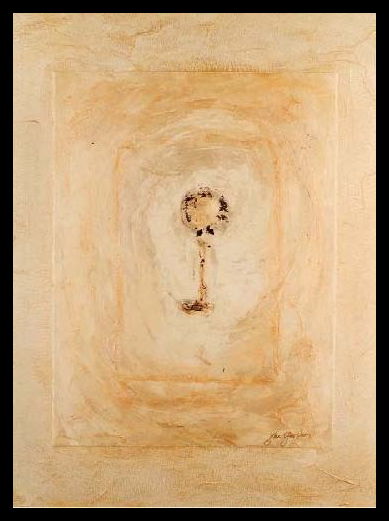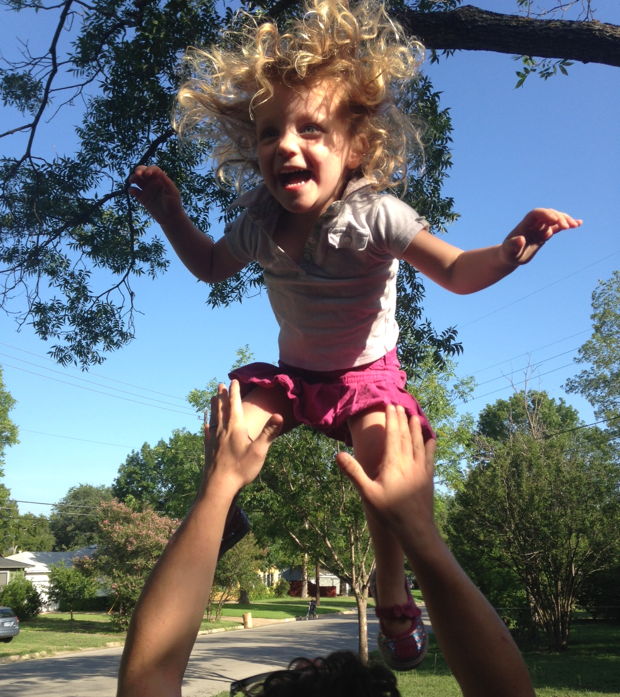Months ago, we began packing boxes to move from Tennessee to Texas. Our move date was delayed and then delayed again. When it seemed everything was in place for us to move and, at last, we had loaded all our earthly belongings into a trailer with two kids in tow, there was a bureaucratic mix up with our housing plans and we suddenly found ourselves with no place of our own to land.
Thankfully, family and friends sheltered us while we waited and we were eventually able to move in to our house, but we’ve lived in an in-between place for months now. Boxes, some half-full, some yet to be opened, are strewn across the floors and piled in the corners of every room. Work crews with buzzing saws and jackhammers overtake the house each day doing repairs. We’re still waiting to be settled and dreaming of the day when we feel like we live here and can just have a regular, boring weekend.
There is pain in waiting: waiting to hear if you got into grad school or got the job, waiting to see if he calls back; waiting to get the biopsy results; waiting to see who your kids are becoming; waiting to see if you’re able to have kids.
A season of waiting isn’t necessarily a time of mourning or of joy. It’s usually not even clear if there’s mourning or joy to be had. It’s a time simply marked by the discomfort and anxiety of the wait, the throbbing of not yet knowing.
Mostly when I wait, I feel impatient. I just want to get on with it — for the waiting to be over. To be there or here, but not in-between. Come mourning, come joy, let’s just get there already.

A large print hangs on my wall of an oil painting by my talented friend Jan. She is one of the most vivacious and engaging women I know and she’s suffered from significant health problems for decades. She has had long periods of — quite literally — painful waiting. One day I walked into her home, which is filled with her amazing artwork, and I saw a painting I’d never noticed before. It was slightly abstract and shimmering in pale hues of ivory and pink with textures both gauzy and intricate. There was a keyhole etched on the canvas. Standing before it, I felt like I stood before a beautiful, unearthly, luminous door, but I didn’t know what was on the other side. I turned to my friend and said, “Oh Jan! I want to see what’s on the other side of that door.” Jan smiled and said, “Good, that’s exactly how I wanted you to feel.” The painting is called “The Gift.” She’d painted it during a time when she was struggling to remain faithful as she waited and waited and waited. She explained that she wanted the viewer to have that stretching sense of waiting, not being able to glimpse what was on the other side, suspended before her piece in a posture of expectation and uncertainty. And then she said, “I always felt like I was waiting for the gift. But I’ve come to see that waiting is the gift.”
Waiting is the gift? The shimmering canvas before me was beautiful but maddening. How can waiting be the gift? In her suffering, my friend had discovered wisdom that I have not. She has discovered that as she waited for gifts — healing, relief, rescue, or something, at least, definitive — that the Spirit of God is there in the waiting, strong in weakness, drawing her heart into courage and trust. Jan is very wise, and no doubt that’s because she’s had to learn to wait around a lot. She’s come to God impatient, angry, needy, and ready to “get there already,” and God has met her in those places unflinchingly. Each time I look at her painting on my wall, her words make me wonder: What if the gift is in the waiting?
My three year old has come to regard her father as a sort of grown-up sized, cuddly jungle gym. She is constantly jumping on his back, climbing up on his shoulders, asking for “baby slams” (like body slams, for babies), and hanging from his arms. Her favorite game though is when he tosses her up in the air. Each time he does it, I hold my breath and usually tell him to watch the ceiling fan or not toss her so high. But with each toss she squeals and giggles, her blond hair flopping around like a pom-pom. Between the time when he launches her up and when she drops into his arms again, there’s a moment when she’s totally in air, completely suspended, eyes flashing and face flushed with exhilaration and life. Her joy in this moment isn’t because she’s naïve about falling. She’s normally a little timid and she gets uncomfortable with heights. But she trusts her dad to catch her because he always has. And if he’s not scared, then she’s not scared.

My life feels a little like that now — tossed in the air, waiting to land. I want to find the gift in this season of unsettled waiting, but the gift can only be enjoyed if there is, in fact, a Father who loves me, who’s in control of this time of waiting, tension, and expectation. I can’t relax into waiting by force of will, but I can try to mimic my daughter’s trust that her dad won’t let her fall and keep my eyes open for unexpected gifts.
Thanks to Jan Garven for allowing us to publish this image of her work. To see more artwork by Jan Garven, visit her website.